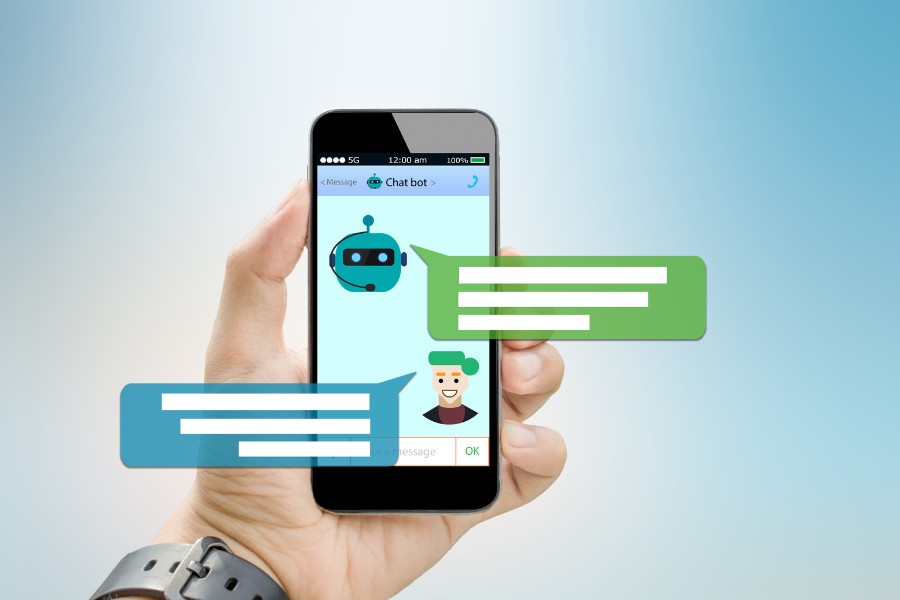Chatbots are an increasingly popular tool in recruiting. They can streamline communication with applicants, answer basic job-seeking questions, automate pre-screening and more, but they can also be expensive. If you want to make the most of these investments, you must keep an eye on their returns.
A chatbot’s return on investment (ROI) is a great way to measure its success and inform future projects. Here’s how to calculate this figure to get the most out of your bot.
1. Determine Relevant Metrics
The first step in measuring your chatbot’s ROI is deciding what to track. At first, this may seem simple, but costs and returns aren’t always as black and white as they appear.
How you measure your chatbot’s success should depend on why you’re using it. Some companies use AI to find passive candidates, so they should track how many of these employees they attract. However, there are related factors to consider, too, including the overall number of applications, how long new hires stay with the company and how these trends impact hiring costs.
The most accurate ROI measurements will cover more than one metric. Even if you’re using a chatbot for a singular process, it could affect multiple factors within that workflow. Ensure your metrics are relevant to your goal, but don’t overlook smaller, related factors to your main success indicator.
2. Calculate Costs
Regardless of what your chatbot goals are, you must measure costs. The most obvious expense to consider is your chatbot’s upfront price, but that doesn’t reflect the entire investment.
If you had to upgrade any IT infrastructure to use a chatbot, those prices factor into your costs. Time is another big metric to consider. Measure how long it takes to get your chatbot up and running, then multiply that by any involved employees’ hourly salary to determine the workforce costs of installation.
Any disruptions the chatbot incurs — like having to pause systems to fix a bug — are also costs to consider. If employees must take time away from their normal work to learn new workflows, count those hours as costs, too.
3. Measure Pre-Chatbot Benchmarks
Now you need something to compare those costs against. To measure your chatbot’s success accurately, establish a pre-chatbot baseline.
Without a company-specific benchmark, judging your chatbot’s ROI will be difficult. Chatbots could save businesses $8 billion annually, but that doesn’t mean your recruiting process will see such a dramatic cost decrease. These overall figures aren’t helpful in judging specific projects’ performance. You must compare savings to your current level, not industry averages.
Apply whatever metrics you’ll use to track your bot’s performance in the future to your current workflow so you can judge any changes with hard data. Remember to keep these relevant to your goals and include supporting factors.
4. Track Chatbot Results
Once you know where your current recruiting process stands, you can implement your chatbot. Keep gathering data on the same metrics you used to measure your benchmarks. You should collect as much relevant information as possible, but remember that any changes you see will be minimal if you review it too frequently.
Remember, a positive ROI is about more than money. Just because your upfront recruiting spending hasn’t changed much doesn’t necessarily mean your chatbot wasn’t successful. You must look at a wider range of metrics to get the full picture.
Many recruiters find that chatbots improve candidate satisfaction, which leads to happier, more fulfilled employees. Over time, these employees deliver better results, but this change may not show up in an easy-to-interpret figure initially.
5. Adjust as Necessary
You’ll likely find that your chatbot’s ROI isn’t entirely negative or positive. The bot will probably improve some factors, while other metrics may remain the same or worsen. Ideally, you’ll have a net gain, but regardless of the outcome, it’s important to respond to both successes and failures.
Look at the factors of your chatbot’s ROI that didn’t meet expectations and ask why. Compare them to the improved areas to see if you can apply lessons from one to the other. Even if you achieved a net positive ROI, tweaking the areas where your growth is less than stellar will maximize your returns.
Keep in mind that sometimes, positive returns just need more time to show. While some chatbots can deliver results in weeks, yours may take months to achieve the same. Don’t write off missed targets as a matter of time, but it’s important to allow sufficient space for returns to present themselves.
Get More Out of Your Recruiting Chatbot
Chatbots are one of the most impactful technologies in modern recruiting. That said, they won’t have the same impact in every situation at every company. Their success depends on your implementation, so tracking their ROI is essential.
These steps will help you set targets and measure success effectively, regardless of your specific chatbot use cases and goals. You can then use this technology to its fullest potential.
Authors
Zac Amos
Zac Amos is the Features Editor at ReHack, where he covers business technology, cybersecurity, and other trending tech topics. For more of his work, follow him on Twitter and LinkedIn.
Recruit Smarter
Weekly news and industry insights delivered straight to your inbox.





